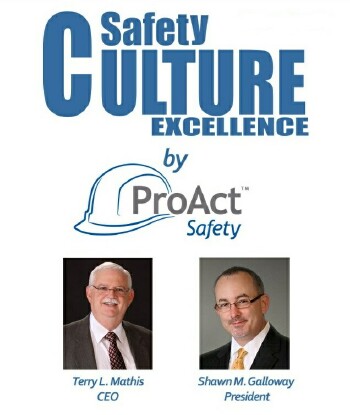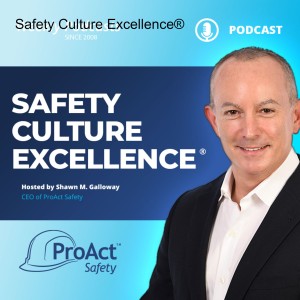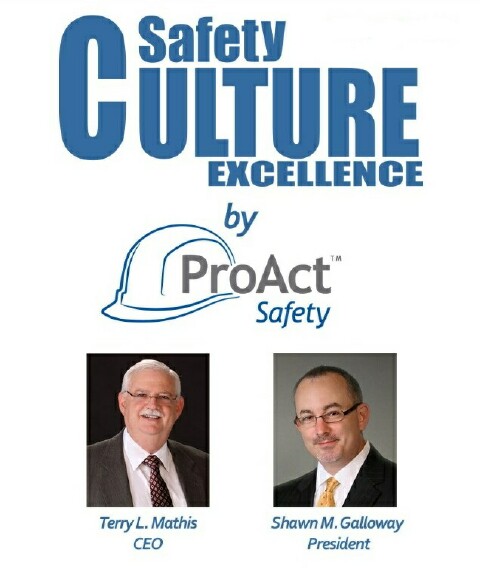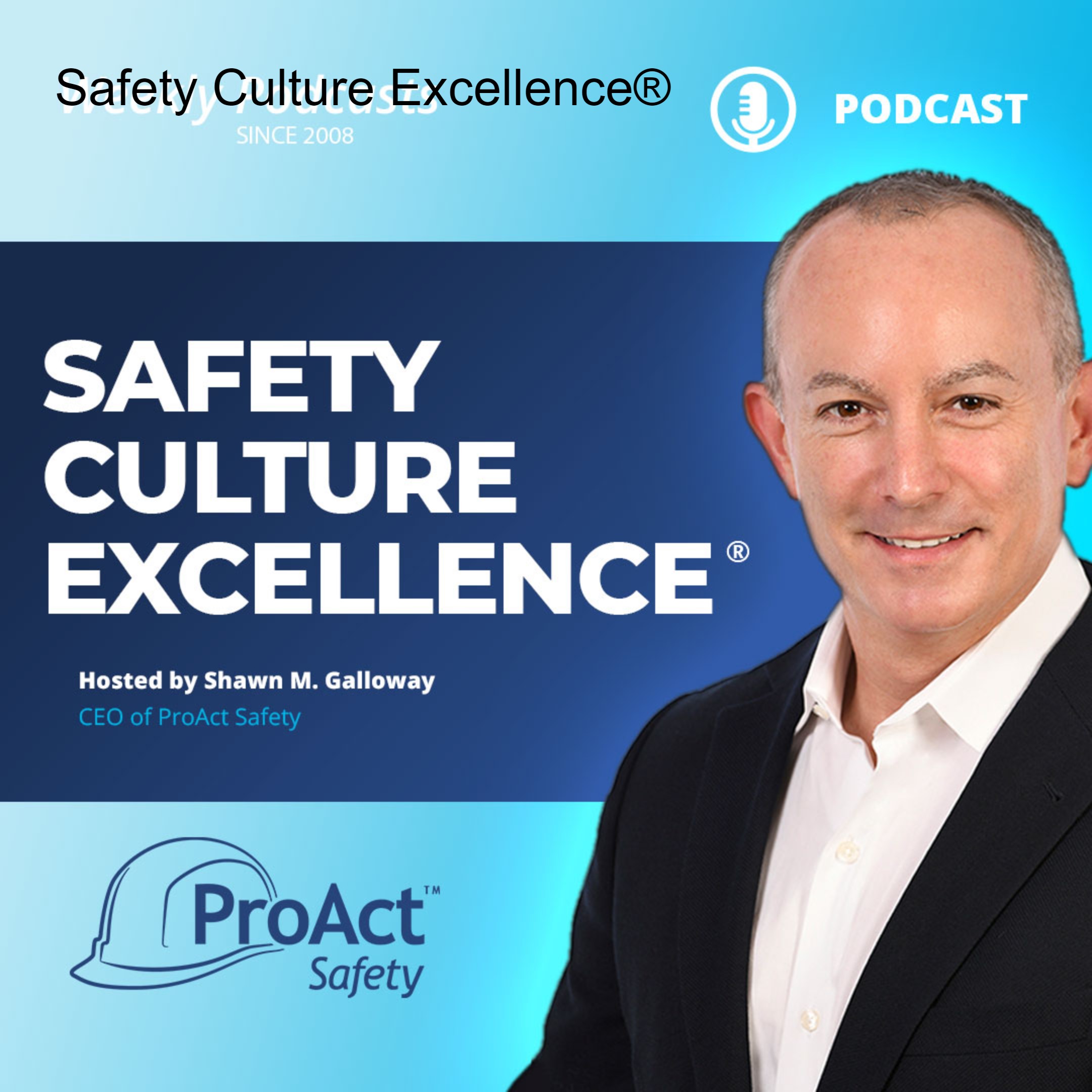Episodes

Wednesday Mar 11, 2015
The Safety Game Plan
Wednesday Mar 11, 2015
Wednesday Mar 11, 2015
Just as a head coach should bring a plan to win each game, leaders of organizations should have a plan to win in safety. If you truly seek excellence, it is not enough to simply set a goal to win by so many points, or just show up and rely on the native ability of your players. True leadership involves strategy. How do you play on your strengths? How do you adjust for special challenges? How do you constantly revise your plan based on successes and failures? How do you motivate and direct your players?
So many safety programs lack true strategies and simply rely on good players, traditional plays, and a little cheerleading. Leaders stress safety rather than leading it. They give it lip service and even invest resources in traditional efforts, but they don’t really have a game plan. They fire poor performers and try to hire better ones, but don’t really have a training program to maximize performance. All the symptoms of poor coaching apply to safety leadership. Do you bring a game plan to the table in your organization?
-Terry L. Mathis
For more insights, visit
www.ProActSafety.com
Terry L. Mathis is the founder and CEO of ProAct Safety, an international safety and performance excellence firm. He is known for his dynamic presentations in the fields of behavioral and cultural safety, leadership, and operational performance, and is a regular speaker at ASSE, NSC, and numerous company and industry conferences. EHS Today listed Terry as a Safety Guru in ‘The 50 People Who Most Influenced EHS three consecutive times. He has been a frequent contributor to industry magazines for over 15 years and is the coauthor of STEPS to Safety Culture Excellence (2013, WILEY).


Wednesday Mar 04, 2015
Suppliers and Quality
Wednesday Mar 04, 2015
Wednesday Mar 04, 2015
W. Edwards Deming urged organizations to establish relationships with suppliers and stick with them, even when they could save a few pennies by changing to another. He knew that the reduced price was usually a loss leader and that the changeover would cost more than the savings. We have not yet learned this lesson in safety. We farm out services and products to the lowest bidder, assuming the quality is the same and that continuity of provider has no value. We also assume that a consultant who specializes in one service, or a manufacturer who specializes in a particular product, is superior. These assumptions are not necessarily so.
The relationship with a provider can make them more valuable than price, product or service. Someone who really takes the time to understand your business can often tailor to your needs much better than a subject-matter expert who doesn’t know or understand your organization. The relationship is often what gets you superior support, preferential treatment and customized solutions. Look for someone who cares for you, not just who gives you the lowest price. Quit trying to save pennies and concentrate on saving lives.
-Terry L. Mathis
For more insights, visit
www.ProActSafety.com
Terry L. Mathis is the founder and CEO of ProAct Safety, an international safety and performance excellence firm. He is known for his dynamic presentations in the fields of behavioral and cultural safety, leadership, and operational performance, and is a regular speaker at ASSE, NSC, and numerous company and industry conferences. EHS Today listed Terry as a Safety Guru in ‘The 50 People Who Most Influenced EHS three consecutive times. He has been a frequent contributor to industry magazines for over 15 years and is the coauthor of STEPS to Safety Culture Excellence (2013, WILEY).


Monday Mar 02, 2015
377 - The Reality of Positive Reinforcement
Monday Mar 02, 2015
Monday Mar 02, 2015


Wednesday Feb 11, 2015
Winning in the Post-Season
Wednesday Feb 11, 2015
Wednesday Feb 11, 2015
Many sports teams who have a good season develop high hopes for a good play-off performance only to be badly disappointed. It seems that play intensifies in the post-season when only the best teams are left and winning is contingent on more than the basics. Safety has some similarities: going from poor performance to better performance comes with the basics and reasonable effort. But when only a few accidents remain per year, preventing them takes a whole new level of effort.
The biggest mistake in both these scenarios is assuming that the strategy that got you to this point will get you the rest of the way to top. The problem is that the tools of “bad-to-good” don’t work on “good-to-excellent.” That game plan and those tools must form the basis of your effort, but winning will take a dose of “above and beyond.” The last remaining risks aren’t always visible to the naked eye and a whole new level of analysis is needed. When you get rid of the obvious risks, the next level is less obvious. When you eliminate the high-probability risks, the remaining ones are lower probability and harder to detect. Excellence is a whole new game overlaid on the old game. When you get to the playoffs, develop a new game plan.
-Terry L. Mathis
For more insights, visit
www.ProActSafety.com
Terry L. Mathis is the founder and CEO of ProAct Safety, an international safety and performance excellence firm. He is known for his dynamic presentations in the fields of behavioral and cultural safety, leadership, and operational performance, and is a regular speaker at ASSE, NSC, and numerous company and industry conferences. EHS Today listed Terry as a Safety Guru in ‘The 50 People Who Most Influenced EHS three consecutive times. He has been a frequent contributor to industry magazines for over 15 years and is the coauthor of STEPS to Safety Culture Excellence (2013, WILEY).


Monday Feb 02, 2015
373 - Misusing Negative Consequences
Monday Feb 02, 2015
Monday Feb 02, 2015


Monday Jan 26, 2015
372 - Client and Contractor: Aligning Safety Cultures
Monday Jan 26, 2015
Monday Jan 26, 2015


Wednesday Jan 21, 2015
Quantity and Quality
Wednesday Jan 21, 2015
Wednesday Jan 21, 2015
Rule of thumb: Any quantity goal without a quality requirement will encourage “pencil whipping”. This is especially true of safety audits and observations. Organizations that require everyone to do two observations per month or two audits per week are misstating what they truly want. Quantity is ineffective without quality. There are thousands of studies that support the idea that a certain quantity of contact or assessment is necessary for improvements. But they all go out the window if the numbers are filled with fake, or otherwise poor-quality, components.
What drives change is the right number of quality contacts. Going through the motions and getting the numbers just to check off a box is not what organizations really want. So why do they set these goals, omitting the quality requirements? Largely because the quantity is easily and discretely measured while the quality is more complicated and subjective. It is easier to create accountability around numbers than quality, but doing so can completely compromise the effort. State both quantity and quality requirements in all goals and do your best to hold workers accountable for both.
-Terry L. Mathis
For more insights, visit
Terry L. Mathis is the founder and CEO of ProAct Safety, an international safety and performance excellence firm. He is known for his dynamic presentations in the fields of behavioral and cultural safety, leadership, and operational performance, and is a regular speaker at ASSE, NSC, and numerous company and industry conferences. EHS Today listed Terry as a Safety Guru in ‘The 50 People Who Most Influenced EHS three consecutive times. He has been a frequent contributor to industry magazines for over 15 years and is the coauthor of STEPS to Safety Culture Excellence (2013, WILEY).


Monday Nov 03, 2014
360 - How do you overcome change resistance?
Monday Nov 03, 2014
Monday Nov 03, 2014


Wednesday Oct 01, 2014
Performance: People or Process?
Wednesday Oct 01, 2014
Wednesday Oct 01, 2014
What gets an organization the most excellent performance: good people or good processes? Obviously, these two are not mutually exclusive, but most organizations that utilize both favor one or the other. If you view excellent performance as something delivered by all stars, then you favor recruiting and developing people. If you view excellent performance as something delivered by a highly-functioning team, you tend to select adequate workers and give them specific processes to define their contributions to performance.
The most excellent organizations we work with have an interesting blend of these two approaches. They lean heavily toward the people aspect without neglecting the definition that comes from process. In the extreme this is a choice between “hang your brain at the door and follow the procedure” and “ let’s all hold hands and sing Kum ba yah.” Even great people need direction and no amount of direction can compensate for too much lack of ability.
Neither of these approaches alone has ever proven to produce the highest levels of performance, but the right combination and blending of the two can and has led organizations to levels of performance they didn’t think was possible.
-Terry L. Mathis
For more insights, visit www.ProActSafety.com
Terry L. Mathis is the founder and CEO of ProAct Safety, an international safety and performance excellence firm. He is known for his dynamic presentations in the fields of behavioral and cultural safety, leadership, and operational performance, and is a regular speaker at ASSE, NSC, and numerous company and industry conferences. EHS Today listed Terry as a Safety Guru in ‘The 50 People Who Most Influenced EHS in 2010, 2011 and 2012-2013. He has been a frequent contributor to industry magazines for over 15 years and is the coauthor of STEPS to Safety Culture Excellence, 2013, WILEY.

Wednesday Sep 24, 2014
Awareness vs. Performance
Wednesday Sep 24, 2014
Wednesday Sep 24, 2014
When my staff wrote a training objective that contained the word “awareness” I made them re-write it. Why? Because it is not a performance term! Awareness is simply a cognitive function. All it requires is being awake and paying a modicum of attention. Do you want your children to be aware of traffic or stay out of it? Do you want your workers to passively be aware of risks or actively take precautionary measures?
Training objectives need to be performance-based, i.e. “Given this training, workers will take these precautions regularly within 20 days.” Performance-based objectives are observable in the workplace and can be measured. But training is not the only realm in which performance should the objective. In safety, all communication, leadership, supervision, coaching, and peer interaction should be aimed at improved safety performance.
Yes, awareness is important; but it is a step toward a goal, not the goal itself. If safety-improvement efforts stop at awareness, they will result in a mental state, not a performance step change.
-Terry L. Mathis
For more insights, visit www.ProActSafety.com
Terry L. Mathis is the founder and CEO of ProAct Safety, an international safety and performance excellence firm. He is known for his dynamic presentations in the fields of behavioral and cultural safety, leadership, and operational performance, and is a regular speaker at ASSE, NSC, and numerous company and industry conferences. EHS Today listed Terry as a Safety Guru in ‘The 50 People Who Most Influenced EHS in 2010, 2011 and 2012-2013. He has been a frequent contributor to industry magazines for over 15 years and is the coauthor of STEPS to Safety Culture Excellence, 2013, WILEY.

